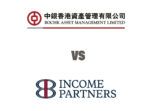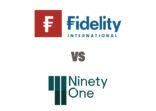Recently, Kevin Gardiner, Rothschild WM’s global investment strategist, said he expected the RMB to be included in the IMF’s Special Drawing Rights basket of currencies, alongside the US dollar, the euro, the Japanese yen and the British pound.
But he added that the event was “mainly symbolic.
“It’s not going to galvanize the international investor attitude toward China. It’s a positive development, but more of a long-term geo-political development.”
Not everyone agrees. Mansfield Mok, senior portfolio manager at EFG Asset Management in Hong Kong, believes it is an external vote of confidence for China’s reforms. Getting the IMF’s acceptance of the yuan into the SDR basket shows that China’s financial reform agenda has so far generally been successful.
“The SDR inclusion will send a very important message to all investors. The financial sector was the first sector for reforms. After that will be emphasis on state-owned enterprise reform, which is positive for the market.”
According to Luke Spajic, executive vice president and portfolio manager at Pimco in Singapore, “the `reward’ for China will most clearly be seen in flows into the currency from the world’s central banks and sovereign wealth funds, which should alleviate some concerns over the potential for capital outflows going forward.
“The further out we look, the more we expect policymakers to allow the yuan to move in order to balance capital flows.”
Capital inflows
Axa IM believes the SDR inclusion will trigger a portfolio rebalancing by the IMF toward the RMB assets, but it could also affect the investment decisions of other official and private investors, Aidan Yao, head of research and investment strategy, wrote in a research note to clients.
“Our estimate suggests an aggregate inflow of up to $600bn from supranational, official and private investors over the next five years. These estimates are subject to significant uncertainties, and contingent on the unfolding of our baseline case of economic soft-landing without large scale financial crisis, the firm said.
Others, such as Raymond Gui, portfolio manager at Income Partners, believe SDR inclusion is underestimated by the market.
“Even If the RMB gets a 5% allocation in the basket, a lot of central banks and institutional investors will find they are underweight in China’s currency and start to seriously consider allocating to RMB fixed income,” said Gui, who is the sub-manager for the Nordea 1 – Renminbi High Yield Bond Fund.
Index impact
More tangible benefits will come from Chinese equities being included in global indices.
Earlier this month, the MSCI announced that 14 US-listed Chinese companies will be added to the MSCI China Index. Next year, the MSCI is expected to decide whether to include A-shares on their global emerging market indices.
Spajic suggests that the expected SDR inclusion is a first step. Important, but more of a global endorsement that should promote confidence in China’s financial system.
“The inclusion of the yuan in the SDR is the key that opens the door to Chinese capital markets,” he wrote. “Chinese equities are likely to enter global emerging market indexes over the next year or two (they already have the second largest market capitalization in the world).
“And the Chinese fixed income market, the third-largest in the world, is likely to become a major part of the global investor toolkit over the secular horizon, as local market access for foreign investors continues to expand.”
















